First things first, this month’s newsletter marks the one-year anniversary of Content Corner! I want to extend a huge, huge thank you to all of you who subscribe and take the time to read every month. I appreciate you so much! And, if you’re having a good time, please tell a friend!
Now, let’s get into it:
August Book Selections
Summer reading vibes continue as we enter the twilight of the season.

Recommendations for the month ahead include:
Luster by Raven Leilani (2020) — I consider Raven Leilani one of today’s finest writers. Her first novel, Luster (2020), debuted four years ago, almost to the date, and makes for a propulsive summer read. It centers on Edie, a 23-year-old Bushwick girlie and one of two Black women working at a New York publishing house (“On her first day, she came to the office meek and gorgeous, primed to be a token. And as you are wont to do — having always been the single other in the room, having somehow preserved hope that the next room might be different — she looked around, searching for me. When she found me, when we looked at each other that first time, finally released from our respective tokenism, I felt incredible relief.”). An aspiring painter, Edie finds herself slowly drawn into the matrix of a white suburban family, first by way of her affair with middle-aged Eric, then through her artistic connection with his wife, Rebecca, and her sense of mentorship toward his adopted daughter, Akila.
Introducing an interview with Leilani in The Yale Review, UC Berkeley Professor of Film and Media Rizvana Bradley notes how “Leilani’s confrontations with the precarities of race, gender, and class convey the beauty and the devastation that is inherent in the politics of intimacy, the psychic life of antiblackness, and the difficult inheritances of femininity…No transgression or indecorum is off the table, and Leilani’s writing is always inflected with dark humor — even if, to borrow Lauren Berlant’s phrasing, ‘comedy is always comedy of survival.’” Leilani’s bone dry prose blends lyricism with deadpan humor to capture the acute sense of dread that has come to characterize the modern condition. For instance, at one point, Edie narrates: “I think about sending him [Eric] a comprehensive list of things that he is allowed to do to me, so that we are on the same page, but when I have a draft it has a kind of Helga Pataki vibe. I try my hand at it a few more times before I give up and go find Kevin, who has acquired the book at the center of this PR nightmare, an illustrated history for the conservative child, a lyrical meditation on the radicalism of the liberal media and the martyrdom of rural states.”
Beyond the obvious open marriage — and Edie’s role within it — at the center of the plot, Luster centers on the artistic process and preoccupations of its Gen Z narrator. Discussing the novel from the vantage point of 2022, Leilani explains: “Now that it has been a few years since the book came out, I feel more able to articulate how my own life — my relationship to making art, how I was paying my bills, the ways I had been indoctrinated into specific social codes regarding carnality and misbehavior — shaped the preoccupations of the book. While I was writing about a black girl grappling with her artistry, I was grappling with my own. The book came in a panic, the fastest I’ve ever written anything, and it happened, like Edie’s paintings, between working hours. It was personal. Everything I do starts in the personal, and if it doesn’t, it dies.”
The Body in Question by Jill Ciment (2019) — An ideal beach read, one that resists the urge to compromise high-quality prose in favor of plot! As discussed in the July Book Review:
The Body in Question centers on a Florida murder trial, where one of two twin sisters has torched their family home and killed their baby brother in the process. Told in a close third person from the perspective of one of the jurors, a 52-year-old photographer, the novel examines the nebulous notion of truth at the hands of human error.
The first half of the book occurs during the tabloid-worthy trial itself, using juror numbers to reference the narrator — C-2 — and her peers, while the latter portion exposes their identities and the fallout of the verdict. Subjectivity drives the thrust of the tension as C-2 finds herself drawn into an affair with a fellow juror ten years her junior — F-17 —, an anatomy professor whose youth serves as a welcome counterbalance to the weight of her husband’s age (“An elderly stranger’s face fills the screen when it is C-2’s turn to Skype. Only when the frowning lips smile does she recognize her husband.”). With C-2 swept up in a cloud of lust, certain pieces of evidence diffuse into the air, coming back to haunt her during deliberation.
Ciment teases out a riddled plot that, in the hands of a lesser writer, could come across as soapy beyond belief. But her tight, scathing prose pierces the heart of each dynamic she examines.
Death in Her Hands by Ottessa Moshfegh (2020) — While Eileen (2015), which I recommended back in December, and My Year of Rest and Relaxation (2018) have established the strongest chokehold on culture, Ottessa Moshfegh’s third novel, Death in Her Hands (2020), marks my favorite. An eerie murder-ish mystery set in a sleepy upstate town, the novel inhabits the paranoid mind of an elderly widow.
Per The New Yorker: “On a dawn walk in the birch forest near her isolated rural home…seventy-two-year-old…Vesta Gul finds a handwritten note. ‘Her name was Magda,’ the note says. ‘Nobody will ever know who killed her. It wasn’t me. Here is her dead body.’ But there is no body. The woods disclose no evidence of any crime. It’s a prank, Vesta thinks: ‘Somebody was playing games.’ That’s her initial impression. But isn’t ‘Magda,’ as a name, a bit too particular, a bit too realistic, to have been chosen for a prank? Especially in Levant, the white-bread nowheresville town where Vesta lives. ‘This was not a Jenny or Sally or Mary or Sue. Magda was a name for a character with substance.’ Has Vesta stumbled upon a kind of confession? ‘It seemed so sinister all of a sudden. It seemed so real.’” Over the course of the ensuing 200+ pages, the line between imagination and reality blurs as Vesta struggles to distinguish fact from fiction.
South and West: From a Notebook by Joan Didion (2017) — This non-fiction book from Joan Didion captures the sensation of a summer road trip, of blistering heat across the Sun Belt. As its subtitle suggests, South and West rejects the notion of a linear narrative, instead consisting of Didion’s brief observations about the South, her encounters with its inhabitants. She first recorded the thoughts that shape this book during a 1970 road trip across Louisiana, Mississippi, and Alabama with her husband, John Gregory Dunne, an exploration designed to increase her understanding of the West through enhanced knowledge of the South.
Didion maintains a particular fascination with each region’s relationship to its history. One of my favorite Didion quotes, an excerpt from Slouching Towards Bethlehem (1967), reads: “My own childhood was suffused with the conviction that we had long outlived our finest hour…If I could make you understand that, I could make you understand California.” In her New York Times review of South and West, author Laila Lalami writes: “For many Southerners, Didion remarks, ‘The Civil War was yesterday, but 1960 is spoken of as if it were about 300 years ago.’” A warped sense of linear time defines each region, but, per Didion, Californians tend to reject the notion of context, of the past as having bearing on the present. This curse of eternal future focus manifests most prominently in Didion’s final essay, a piece drawing parallels between her and Patty Hearst’s upbringings.
Summer by Ali Smith (2020) — The final novel in Ali Smith’s seasonal quartet, Summer (2020) grapples with the initial impact of the COVID-19 pandemic — and published mere months after its incept, thick in the summer of 2020.
As Dwight Garner writes in his New York Times review: “Ali Smith’s new novel, Summer, is the concluding volume in her immersive, prickly and politically ardent seasonal quartet. The previous novels in the series, Autumn, Winter, and Spring, appeared in 2017, 2018, and 2019, respectively. Each has been on the beat of the world’s news, from Brexit to Trump to wildfires in Australia to immigrant detainees to, now, the arrival of COVID-19. (You imagine her at the printing plant, dictating final touches as the presses churn.) Each has been like a push notice that clicks open in your mind. They’ve been boon companions, these novels. It’s hard to say if they’ll hold up as lasting works of art, but they’re certainly here right now. And later, as John Maynard Keynes said, we’ll all be dead.”
Summer marks my favorite novel in Smith’s series, as it connects the various characters and threads from earlier volumes into a sweeping yet quiet conclusion. They reappear through the prism of single mother Grace Greenlaw and her two children, Sacha and Robert. As Garner so eloquently puts it, “The pandemic sneaks in at the margins of this novel. The drawings of the virus, Sacha thinks, ‘all look a bit like little planets with trumpets coming out of their surface, or little worlds covered in spikes of growth, a little world that’s been shot all over its surface by those fairground darts with tuft tails from the old-fashioned rifle ranges, or like mines in the sea in films about WW2.’ Smith’s seasonal novels can be pretty on-the-nose, politically. Sometimes they veer into the saccharine. The water, here and there, turns brackish. But as with a strong river, their motion is fundamentally self-purifying. Summer is a prose poem in praise of memory, forgiveness, getting the joke and seizing the moment. ‘Whatever age you are,’ one character comments, ‘you still die too young.’”
Upcoming Content to Consume
New Beverly Cinema: Sharon Tate Double Feature (Dates: 8.6-8.7) — If you know me IRL, you know I’ve been a long-time fan of Sharon Tate. Growing up in Southern California, the tragedy of her death always bubbled in the background. My grandmother once told me, “Everyone in LA knew each other at that time. We were like a big family, and it felt personal.” On a fall night in 1969, my grandma stopped for dinner in Independence, one of the towns marking the route from Mammoth to LA, with my mom and uncle, unaware of Charles Manson’s simultaneous capture in the same town. A few years later, my mom would watch groups of classmates at The Westlake School for Girls drive up to 10050 Cielo Drive, a morbid exercise with appeal beyond her comprehension. I first came to know of Tate as a talented actress whose career got cut short, unfairly eclipsed by the tragedy of her death; with time, she became a forever fashion inspiration, a gentle soul whose filmography I admire.
This month, check out two of her movies, The Fearless Vampire Killers (1967) and The Wrecking Crew (1968), at Quentin Tarantino’s revival theater if you’re based in LA. From my perspective, Valley of the Dolls (1967), which earned Tate a Golden Globe nomination for New Star of the Year — Actress, Eye of the Devil (1966), and Don’t Make Waves (1967) mark her better films, but The New Bev’s August picks are still worth a watch. Plus, the theater will follow the Double Feature with four days of Once Upon a Time…in Hollywood (2019) screenings to commemorate the 55th anniversary of Tate’s untimely death.
Elizabeth Street Garden Movie Nights: Some Like It Hot (1959) and Rear Window (1954) (Dates: 8.7 and 8.21) — Elizabeth Street Garden’s movie nights continue into August with two classic picks, Some Like It Hot (1959) and Rear Window (1954).
The ultimate crime comedy from my king, Billy Wilder, Some Like It Hot centers on saxophone player Joe (played by Tony Curtis) and his buddy, Jerry (played by Jack Lemmon), who escape Chicago after watching a Mafia hit go down. To make it out alive, they hop a train to Florida (in reality: San Diego’s historic and haunted Hotel del Coronado) disguised as women in an all-female jazz band, helmed by a chanteuse named Sugar (played by Marilyn Monroe). Hijinks and hilarity ensue, and Curtis, Lemmon, and Monroe deliver in spades at every turn. To quote a Letterboxd rando: “If you don’t think this is one of the best comedies ever made, you haven’t watched it yet or you’re wrong.”
Rear Window, my favorite Hitchcock, adopts the perspective of injured photojournalist L. B. “Jeff” Jefferies (played by Jimmy Stewart), confined to a wheelchair in his Greenwich Village apartment after sustaining a leg injury. His back window faces a courtyard, provides a peek into the lives in the apartments across the way. Starved for entertainment despite regular visits from his socialite girlfriend, Lisa Fremont (played by Grace Kelly) and nurse, Stella (played by Thelma Ritter), he watches his fellow tenants during a summer heatwave. One night, Jeff becomes convinced he has witnessed a murder, recruiting Lisa and Stella to help him unearth the truth. I truly cannot think of a better film to watch outside in downtown Manhattan in the summer.
What Ever Happened to Baby Jane? (1962) at Metrograph (Dates: 8.16-8.17) — Cap off your brat summer with a screening of What Ever Happened to Baby Jane? (1962) at Metrograph, playing as part of the theater’s Twisted Sister series. ICMYI: I discussed this creepy cult classic, arguably the bitchiest movie ever made, as part of the June Movie Review.
Then, head home and (re)watch Ryan Murphy’s first Feud season, based on the making of the film and the legendary rivalry between Bette Davis and Joan Crawford. (I’m still watching it, so thoughts to come in the September newsletter if I don’t get distracted and forget about it part way through, which I famously tend to do with even the best of shows. But, given this one includes a killer performance from Susan Sarandon as Davis and stars Stanley Tucci as Jack Warner, I think I’ll make it through.)
Cinespia at Hollywood Forever Cemetery: Kirsten Dunst Slumber Party: Bring It On (2000) and The Virgin Suicides (1999) (Date: 8.17) — Every year, Cinespia mounts a late-night double feature. This year’s series honors Kirsten Dunst, indie darling and girlhood representative, with cemetery screenings of two of her most memorable movies, Bring It On (2000) and The Virgin Suicides (1999). I went to The Virgin Suicides at Cinespia back in 2015 and would 10/10 recommend.
McNally Editions Book Club: Free Love: The Story of a Great American Scandal (2024) by Robert Shaplen (Date: 8.19) — I am once again flagging my friend Ama’s monthly book club at McNally Jackson in Downtown Brooklyn, which focuses on “books that have been largely forgotten, the reissued classics and rare finds that have slipped from the mainstream and are waiting to be discovered by a new set of readers.” This month’s pick seems especially juicy, following the adultery trial of preacher Henry Ward Beecher.
Per the site: “On the night of July 3, 1870, Elizabeth Tilton confessed to her husband that she’d had an affair with their pastor, Henry Ward Beecher. This secret would soon transfix America, for Beecher was the most famous preacher of the day, founder of the most fashionable church in Brooklyn Heights, a presidential hopeful, an influential supporter of Abolition, and a leader of the campaign for women’s suffrage. When Beecher tried to silence the Tiltons, it was a whisper network of suffragists, notably Susan B. Anthony and Elizabeth Cady Stanton, who spread news of the affair, and it was the radical Victoria Woodhull — an outspoken proponent of “free love” — who seized on it, as political dynamite, to blow up the myth of monogamy among the political elite…In 1953, the journalist Robert Shaplen revisited the Tilton-Beecher affair in a series of articles for The New Yorker, relying on 3,000 pages of contemporary accounts — court transcripts, love-letters, newspaper reports and illustrations, even political cartoons — to reanimate a scandal that shook the American reform movement and to expose a strand of America’s cultural DNA that remains recognizable today.”
Tickets are $5 and function as a voucher to put toward anything in the store!
Carnal Knowledge (1971) at Metrograph (Dates: 8.23-8.25) — For fans of Challengers (2024)! As you might recall, I discussed Carnal Knowledge (1971), which I first watched at Film Forum back in 2022, in my review of this summer’s sexy tennis tour de force.
Per the May Movie Review: “[Challengers] writer Justin Kuritzkes — famously the husband of Past Lives (2023) filmmaker Celine Song — has noted his and [Luca] Guadagnino’s shared love of Nichols’s filmography in interviews…In speaking with with GQ, Kuritzkes points to the particular influence of Carnal Knowledge (1971). The coming-of-age film chronicles the sexual development and subsequent romantic exploits of two men, Nice Guy™ Sandy (played by Art Garfunkel, from whom Mike Faist’s Art Donaldson draws his name in Challengers) and Jonathan (played by Jack Nicholson with the same unwashed sex appeal that characterizes Josh O’Connor’s Patrick), across the decades, through the prism of their shared fixation on the same woman, Susan (played by Candice Bergen). But, as interviewer Raymond Ang notes: ‘In their [Kuritzkes and Guadagnino’s] version, of course, Jack Nicholson and Art Garfunkel would have some locker room fun of their own.’”
Carnal Knowledge certainly makes for a compelling watch on its own. But, if you’re a Challengers fan, I’d especially recommend heading to Metrograph this month for a firsthand look at how Jack Nicholson and Art Garfunkel walked so Josh O’Connor and Mike Faist could hit the steam room.
Paris, Texas (1984) at IFC Center (Opening Date: 8.30) — I’ve wanted to better familiarize myself with German filmmaker Wim Wenders’s work after seeing — and loving — Perfect Days (2023) back in May. Now, a new, 40th Anniversary 4K restoration of Paris, Texas (1984), frequently cited as one of the most visually stunning films of all time, will screen at IFC Center starting at the end of the month.
Per the site: “Out of nowhere, a gaunt man in a dark suit and a red baseball cap appears in the burning heat of the desert between the US and Mexico. Travis. He drinks the last sip from his water bottle, then he moves on, doggedly, into the inhospitable area that the locals call ‘The Devil’s Playground.’ Travis might seem to be mute and amnesiac, but he’s driven by the desire to reconnect with his family. Wim Wenders’s iconic Cannes winner from 1984, exquisitely photographed by Dutch master Robby Müller, is a powerful statement on self-discovery, loss, redemption and the unbreakable bonds of love. Outstanding performances by Harry Dean Stanton and Nastassja Kinski, a masterful screenplay by Sam Shepard, and Ry Cooder’s haunting soundtrack have contributed to Paris, Texas’s cult film status and its spell, even 40 years later.”
Film Forum’s Spielberg Series (Opening Date: 8.30) — Dawson Leery is shaking. Film Forum just announced its long-awaited Steven Spielberg festival, opening on 8.30 and running through 9.12. It consists of 20 films in 35mm, including Jaws (1975), E.T. (1982), Jurassic Park (1993), Schindler’s List (1993), and Saving Private Ryan (1998), to name a few.
I’ll include the full film line-up in the September newsletter, but you also can check back for the announcement at this link in the coming weeks if you have Dawson-level dedication.
Metrograph’s Summer at Sea Series (Timing: Ongoing in August) — Metrograph’s Summer at Sea series continues into August! As you might recall from July, per the site, the line-up features “films set at the shore or on the open water, boasting sweaty, sun-dappled, sand-in-the-toes cinema by Christian Petzold, Wes Anderson, Lina Wertmüller, Ingmar Bergman, and many more. An invigorating gulp of ocean air for the days and nights when you’re stuck in the sticky city, including slapstick comedies, erotic idylls, and plenty of gut-wrenching dramas.”
Last month, I saw Before Midnight (2013) to cap off my viewing of Richard Linklater’s Before trilogy and recommended Bonjour Tristesse (1958) based on my reading of the eponymous 1954 novel. This month, I suggest checking out Jean-Luc Godard’s Contempt (1963), which I discussed in the first-ever newsletter, and La Piscine (1969), which Metrograph seemingly screens quarterly.
Miscellaneous Musings
Brandon Taylor on Alice Munro, Abuse, and the Question of Separating Art and Artist — In May, Canadian short story writer Alice Munro (pictured above with her three daughters), who won the Nobel Prize for Literature in 2013, died. Last month, her daughter, Andrea Skinner (pictured on the far right, on her mother’s lap), published a piece detailing the abuse she experienced at the hands of her stepfather, Gerald Fremlin, and revealing her mother’s choice to stay with him regardless (“I ended contact with my mother after my twins were born. At first, I told her only that I could never see Fremlin again, never have him near my children. She explained how inconvenient it would be for her to visit me on her own, since she didn’t drive. I exploded, and told her our relationship was over.”). I highly recommend reading her essay, as well as this article that captures the experiences of Skinner and her siblings, both published in The Toronto Star.
This revelation has prompted a familiar question, one we as a society often face in light of bad behavior enacted by great artists. Brandon Taylor, forever the king of craft in my eyes, has penned a piece for his Substack, sweater weather, addressing the tired question perpetually asked by publications like Vox in light of such discoveries: “What do we do about Alice Munro now?” In his piece, “what I’m doing about alice munro,” Taylor, who suffered childhood sexual abuse at the hands of his aunt’s husband, threads the personal with the societal, rightly identifying that question as the wrong one. He writes:
I find the handwringing and legacy pondering rather distasteful in the face of what was done to Andrea Skinner. I’m just going to be honest. I don’t think it’s interesting. I don’t think it’s productive. I don’t think it’s even the right set of questions. I am not eager to read the work and interrogate and refine and try to sus out fact from fiction, etc. I do not feel betrayed by Alice Munro. I do not feel the need to throw her books away. I do not feel the need to rend my garments and demand we dig her up so that she can pay for her complicity. I do not even care to know how she personally justified it to herself because I think the answer there is actually pretty boring and ordinary. People can justify anything to themselves. Is that so interesting?
For myself, I will never read Alice Munro the same way again. I now know what I know. So going forward, I believe that Skinner’s story should be a part of discourses around Munro’s work. That seems obvious. I think we cannot talk about Munro’s art without also talking about this aspect of her life. Some people will find that distasteful. Some people will find it tacky. Some people say it’s not enough. And to those people, I say that it’s okay you feel that way. But I also think that we owe it to Skinner, in part because she wasn’t just silenced by her family. Her mother’s fame and prominence as an author actively aided in keeping Skinner’s story out of the news and out of the press. It was a silence that grew directly out of a cultural apparatus that privileged power over the pain and the suffering and the abuse of a young child. Skinner’s pain and the ugliness she has had to endure over decades has not simply been personal. Or familial. And so, there never was a separation between art and artist. Because if Munro had been less famous, less beloved, less known, then…It wouldn’t have taken Munro dying before someone finally got brave enough to stop pretending that Andrea Skinner hadn’t been saying this all along.
Taylor acknowledges the notion of separation between art and artist as myth, a kind of mental gymnastics enacted by a society eager to believe in a protected class, a cadre of enlightened intellectuals capable of rising above the horrors of human nature. For him, “there isn’t ‘the art and the artist’ and one does not ‘separate art from artist’…that is a broken moral calculus that confuses rectitude for an honest accounting of how we live in the world. The very question is stupid right down to its core. The better question is why do you need to feel comfortable in the rightness of the art you engage. Why do you need to create a safe art that has no harmful valences in it?” He goes on: “What I find remarkable is that what so many of us love in Munro’s fiction is the way she reveals how common and small we all are, how at bottom, we are capable of true ugliness and viciousness, that this is not the province of sneering villains but the woman on the corner or the man in the fast car or the quiet old lady in her house in the woods — what amazes me is that we can acknowledge this and yet be confused when confronted with a real-world example of someone who seemed remarkable but who is simply selfish and small.”
Babe, Wake Up, Two Brandon Taylor Craft Books Dropping — Speaking of Brandon Taylor, if you’ve been reading Content Corner for a while, or simply dove into today’s issue, you’ve probably discerned that I think very highly of the millennial novelist and Booker Prize finalist’s work. While his fiction — Real Life (2020), Filthy Animals (2021), The Late Americans (2023) — varies in quality (though on a spectrum from good to great rather than bad to good), Taylor’s literary and cultural criticism rarely misses; it has become a central framework through which I evaluate fiction and, on occasion, film. (You could probably make a drinking game out of how frequently I reference his February essay, “living shadows: aesthetics of moral worldbuilding.”) But, despite having three published works of fiction under his belt, Taylor has kept his nonfiction more or less for Substack, sweater weather — until now.
Last month, Graywolf Press announced plans to partner with Taylor on two upcoming nonfiction works. Per Publisher’s Weekly: “The first book, Taylor’s nonfiction debut, is a ‘work of cultural and literary critique by one of the most significant young novelists of his generation,’ per Graywolf…Taylor ‘will explain certain cultural trends — from autofiction to sprawling dramas to the vogue for speculative fiction — with the aim of articulating a new vision of ethics and morality in fiction.’…The second title…is ‘a craft book that grows from Taylor’s experience teaching creative writing,’ taking into account his observation ‘that the primary references for his students are often no longer novels or short stories but television and film’ and aiming ‘to make the craft of fiction ‘more legible to the cinematic/visual writer.’’”
The books are slated to drop in fall 2026 and 2027, respectively, and I simply cannot wait.
Best 100 Books of the 21st Century? — ICYMI: In July, The New York Times published a list ranking the so-called “100 best books of the 21st Century,” “as voted on by 503 novelists, nonfiction writers, poets, critics and other book lovers — with a little help from the staff of The New York Times Book Review.”
Inevitably, I agree with some rankings and disagree with others. Joan Didion’s The Year of Magical Thinking (2005) has emerged as the definitive grief memoir in the years since its publication and, from my perspective, deserves its slot near the top of the list. Ali Smith’s How to Be Both (2014) may not appeal to every reader, but reflects a kind of formal inventiveness through its prose and structure that, as I see it, justifies its inclusion. On the flip side, I discussed my feelings about Ann Patchett’s Bel Canto (2001) in the January Book Review, writing: “I couldn’t get over how bad I found Patchett’s fourth novel. The prose struck me as overwritten, the plotline — a hostage crisis in an unnamed South American country filled with heavy-handed allusions to opera, one that begins at a high profile diplomat’s birthday party — melodramatic and largely unbelievable despite its basis in truth, its inspiration drawn from the late 90s Japanese embassy hostage crisis in Lima, Peru. (Patchett uses the word ‘lovely; to describe nearly everything and everyone in the novel, leading ‘omg someone plz teach Ann a new word’ to become my most frequent margin note.).”
To me, the discourse around this list begs the question of the necessity of hindsight for clarity’s sake. Can we, from the vantage point of 2024, really identify the 100 best books of a century that isn’t even a quarter of the way over? For instance, Gabrielle Zevin’s Tomorrow, and Tomorrow, and Tomorrow (2022), a novel that dominated subway cars and beaches in the waning days of summer 2022, got ranked at 76. Its tale of a star-crossed friendship between gamers spans from Los Angeles, CA to Cambridge, MA and back again, with “Zevin’s delight in her characters, their qualities, and their projects sprinkl[ing] a layer of fairy dust over the whole enterprise,” per Kirkus Reviews.
In the months following its publication, Tomorrow, and Tomorrow, and Tomorrow established a sentimental chokehold on culture, despite its character-driven engine sputtering out in favor of overplotted shock in the back quarter. Do we as readers have enough distance from the emotional experience of that novel to properly evaluate its formal qualities? How many Tomorrow, and Tomorrow, and Tomorrows stayed off the list because their publication date fell ten, or even five, years prior? (Looking at Normal People (2018), The Vanishing Half (2020), etc.) To me, that question cracks open the issue of this list, one that I feel, with time, will come to reflect the cultural mindset of 2024 rather than the literary crown jewels of a quarter century.
Summer Reading Picks from The New Yorker’s Staff — The New Yorker’s staff writers — from Jia Tolentino to Ronan Farrow — have published a list of summer reading recommendations. Two key picks stand out to me.
Rivka Galchen selects John Rutherford’s translation of Miguel de Cervantes’s Don Quixote (1605, 1615) for Penguin Classics. +1 !! The thing no one tells you about this novel, one of my fondest summer reads, is that, in addition to being incredibly long, it is also extremely funny. It centers on a middle-aged man undergoing a midlife crisis, the novel’s namesake who drags farmer Sancho Panza on his quest to reanimate chivalry through a series of ridiculous adventures (see: battling windmills that our errant knight incorrectly perceives as giants).
Meanwhile, Tolentino picks Larry McMurtry’s Lonesome Dove (1985), writing: “Having grown up in Texas, I’d felt, incorrectly, that I’d somehow always been reading him [McMurtry]. I fell into the novel the way a stone disappears down a well. A journey of former Texas Rangers north from the Mexico border to Montana, a grand quest that unstitches its own mythology with every line, the book had me spellbound, obsessed with the characters, who felt realer to me than my own self.” I have yet to read this novel, but love some Larry McMurtry and, as you may recall, highlighted The Last Picture Show (1966) as a July book pick.
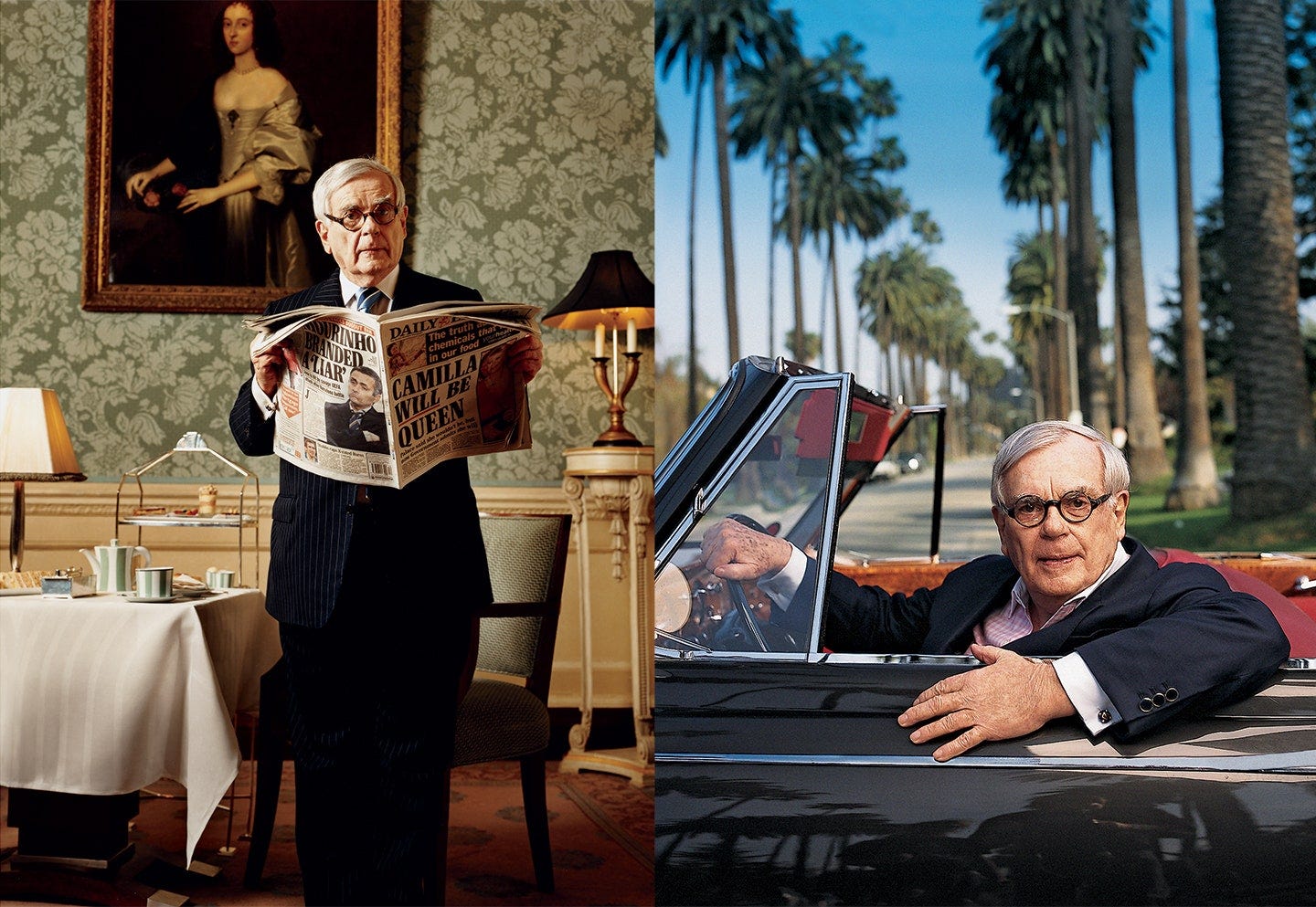
Thinking about Dominick Dunne — In the June Book Review, I discussed Griffin Dunne’s new memoir, The Saturday Afternoon Club (2024). The book enlivens its author’s family, from his aunt Joan (Didion) to his late sister, Dominique. One of the most compelling characters, to me, emerges in the form of his father, the late, great Vanity Fair crime writer Dominick Dunne “— a closeted former film and TV executive who produced William Friedkin’s The Boys in the Band (1970), named his miniature poodles after Oscar Wilde and Lord Alfred Douglas, and, to give you a full vibe check, recently had Nathan Lane tapped to play him in an upcoming Ryan Murphy series.”
Dunne worked in the entertainment industry for decades, throwing a black-and-white ball that Truman Capote attended before co-opting the concept. He rubbed elbows with, then made enemies of, Hollywood’s elite, living out his expulsion from Los Angeles in the Oregon wilderness before crystallizing his greatest pain into the launchpad for a second career. At the recommendation of Vanity Fair’s then-editor, Tina Brown, Dunne kept a meticulous diary during the 1983 trial of Dominique’s killer, notes that would eventually become “Justice: A Father’s Account of the Trial of his Daughter’s Killer.”
In the subsequent years, Dunne established and maintained a reputation as a first-rate crime reporter, covering famous trials from The Menendez Brothers to O.J. Simpson. At the time of Dunne’s death in 2009, Vanity Fair-turned-Air Mail editor Graydon Carter reflected: “He [Dunne] never pretended to be objective in covering trials…He was always writing from the point of view of the victim because of what happened to his daughter, and he had a riveting way of knowing, almost like Balzac, what to tell the reader when.” I highly recommend reading through this Vanity Fair piece on Dunne’s life, his New York Times obituary, and some of his past pieces, which I’ve linked throughout this section.
Supplemental Reading
As always, don’t forget to use archive.ph if you can’t access these pieces or any of the ones throughout my Substack!
Air Mail: Chinatown, Roman Polanski’s Movie Starring Jack Nicholson, is Still a Classic at 50
New York Times: The Most Memorable Literary Moments of the Last 25 Years
The Paris Review: Ali Smith, The Art of Fiction No. 236
Eater Los Angeles: The Epic Rise and Fall of Ma Maison, The Restaurant That Made Wolfgang Puck Famous
Salon: A literary feud for the ages: What fueled the bad blood between Dominick Dunne and "the Didions"
Cocktail of the Month
The cherry cocktail theme continues this month with the…
One of my dear friends introduced me to this summer spin on a Gin Fizz a few years ago! Think of it as the Cherry Paper Plane for gin lovers.
To make a Cherry Pop, muddle together 3-4 cherries with one and a half ounces of gin in a cocktail shaker. Add ice. Then, mix in half an ounce each of lemon juice and orgeat. Shake well, and strain into an iced rocks glass.
Top with an ounce of prosecco, garnish with fresh cherries, and enjoy!
That’s all for now! Stay tuned for the July Movie Review.
xo,
Najet






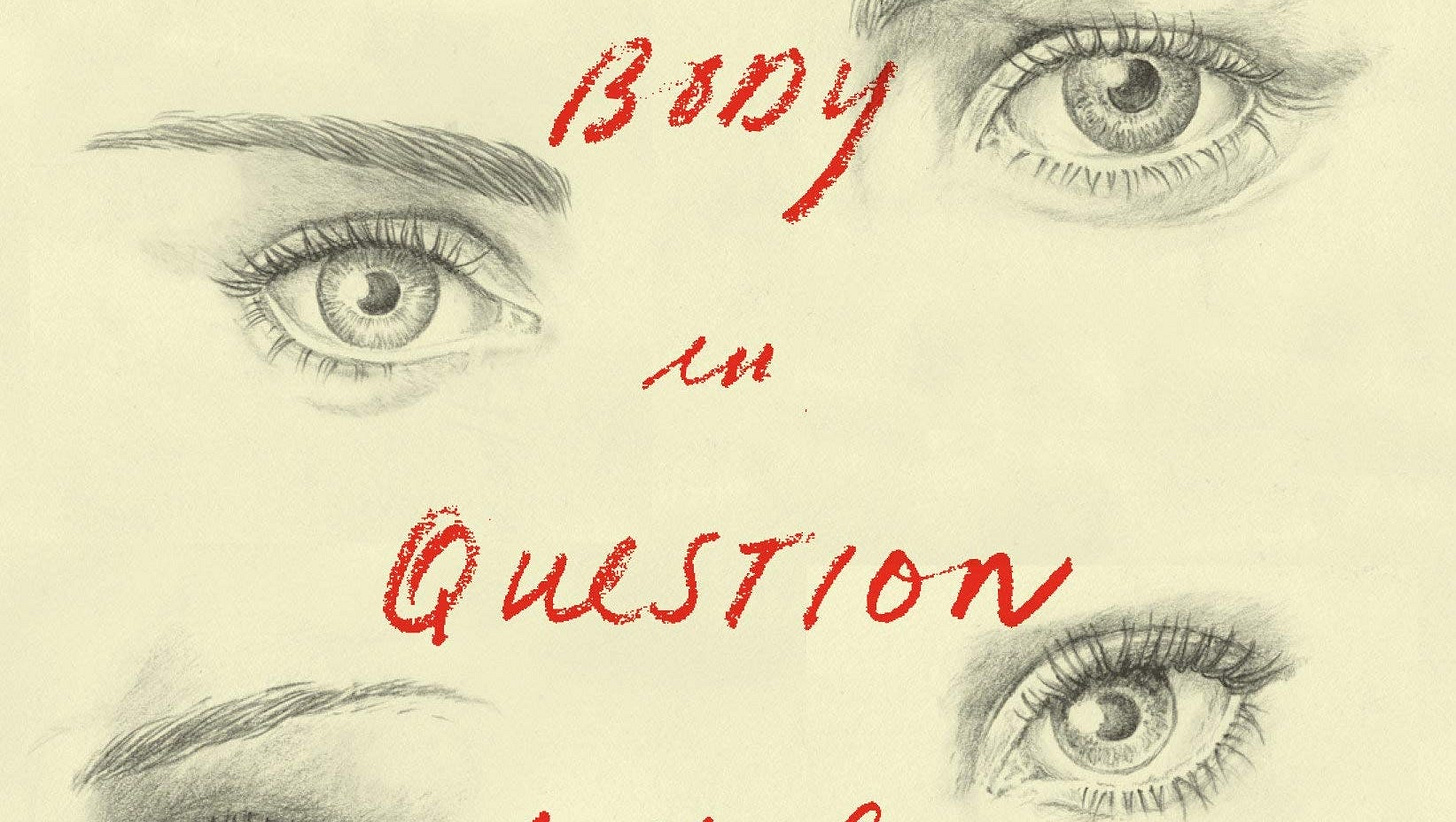


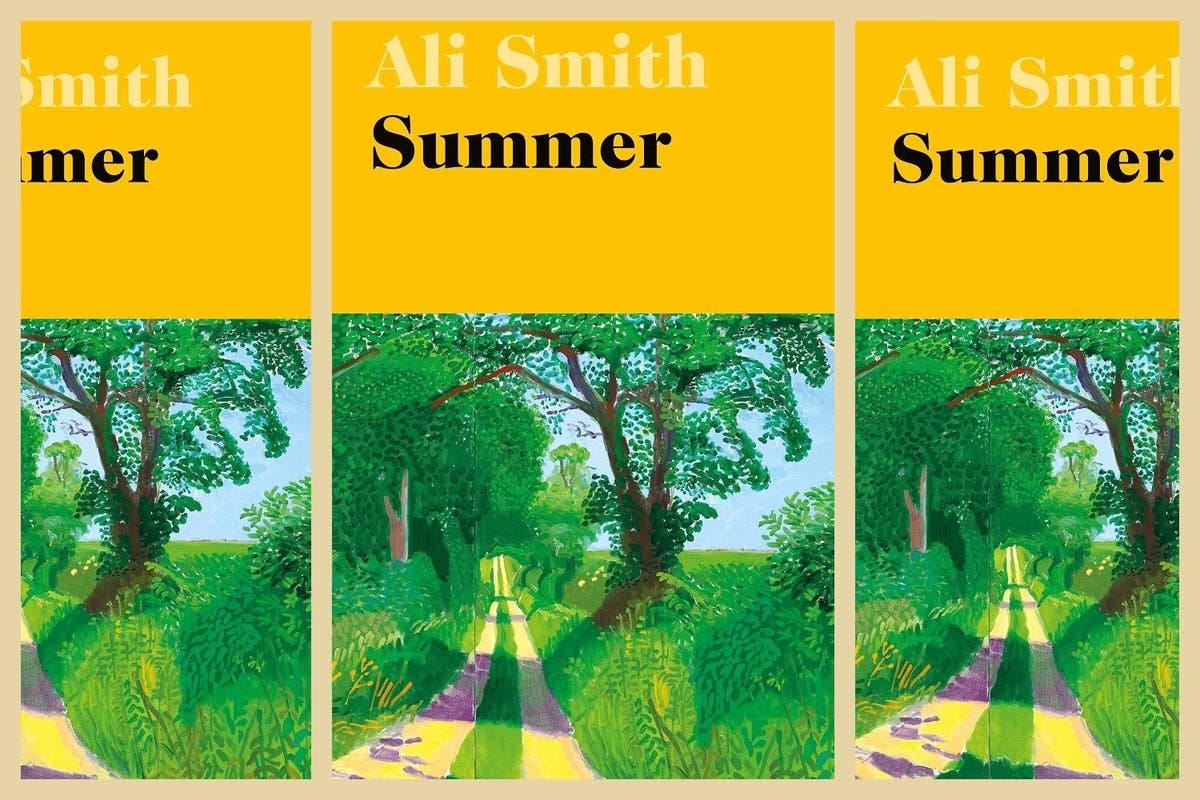
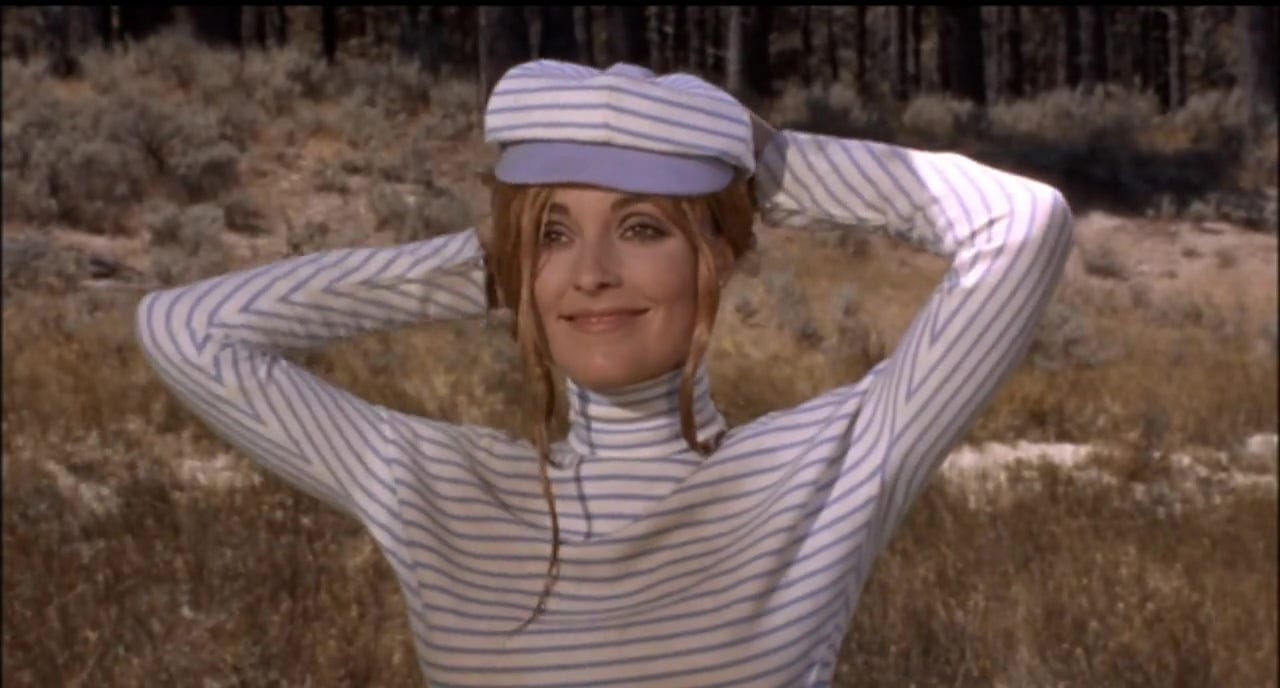
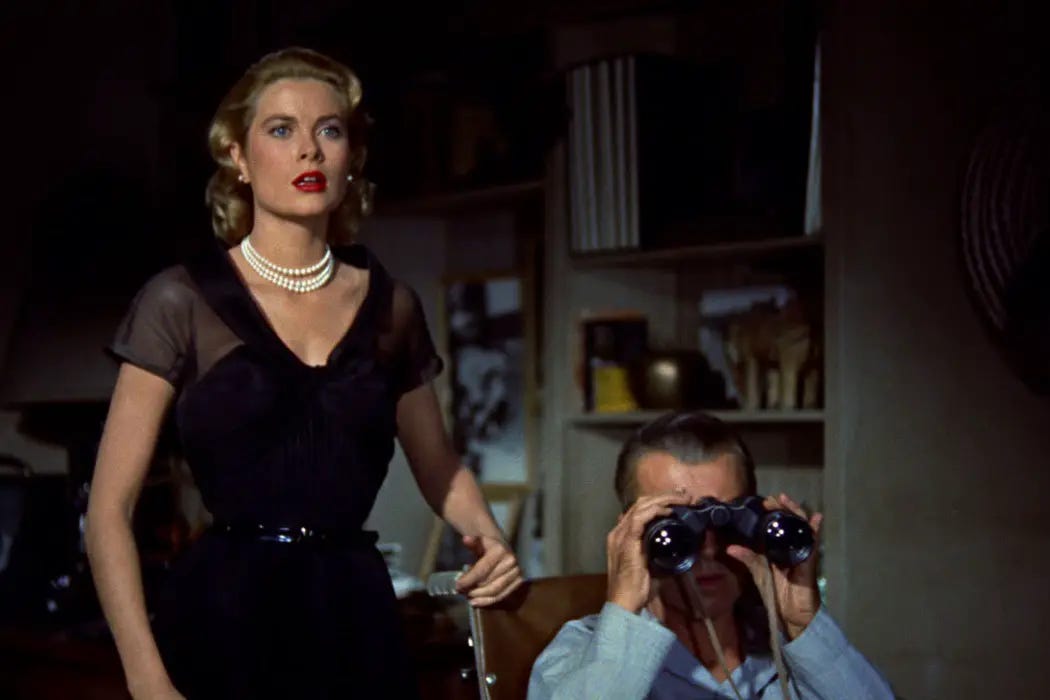
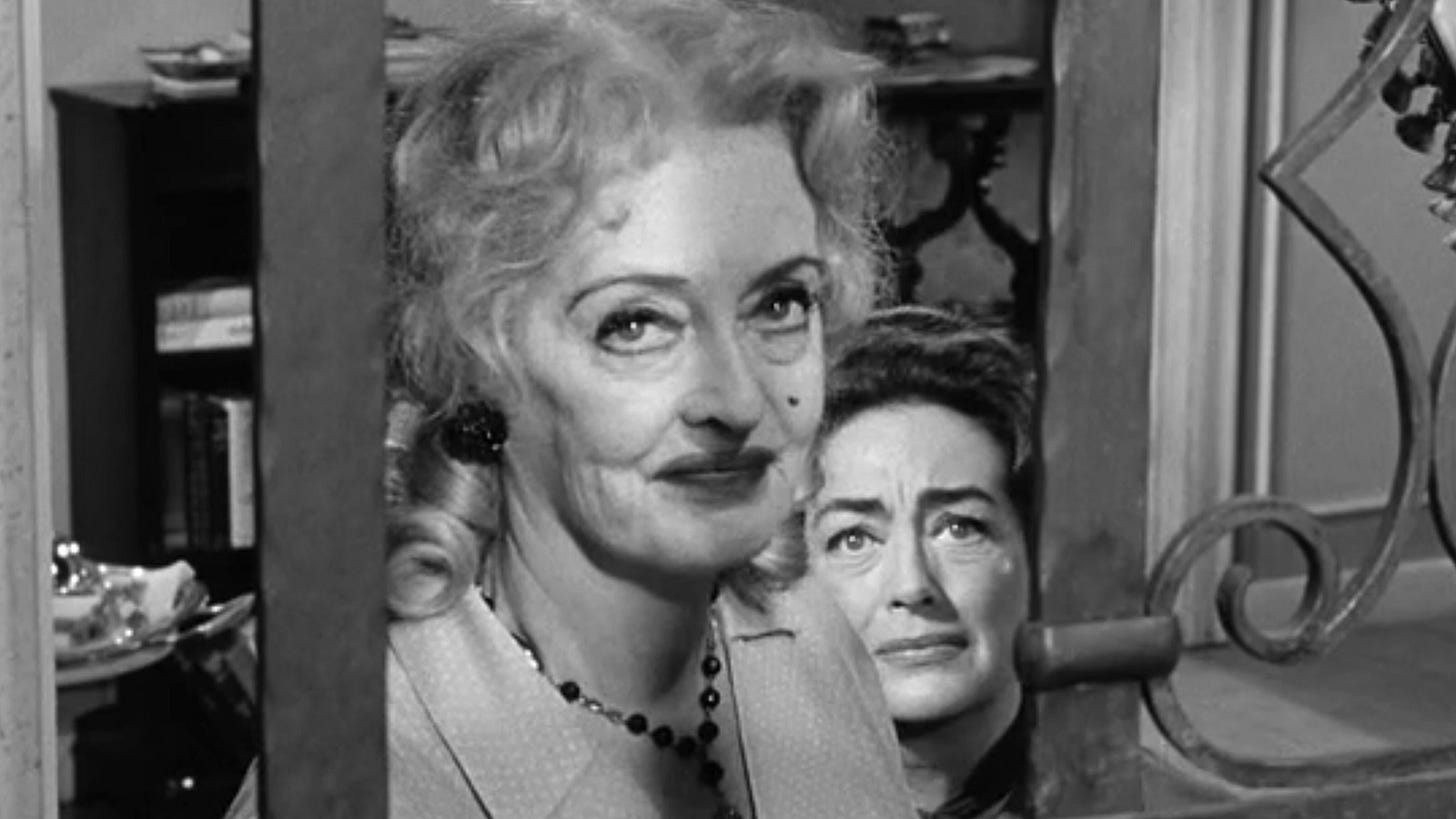










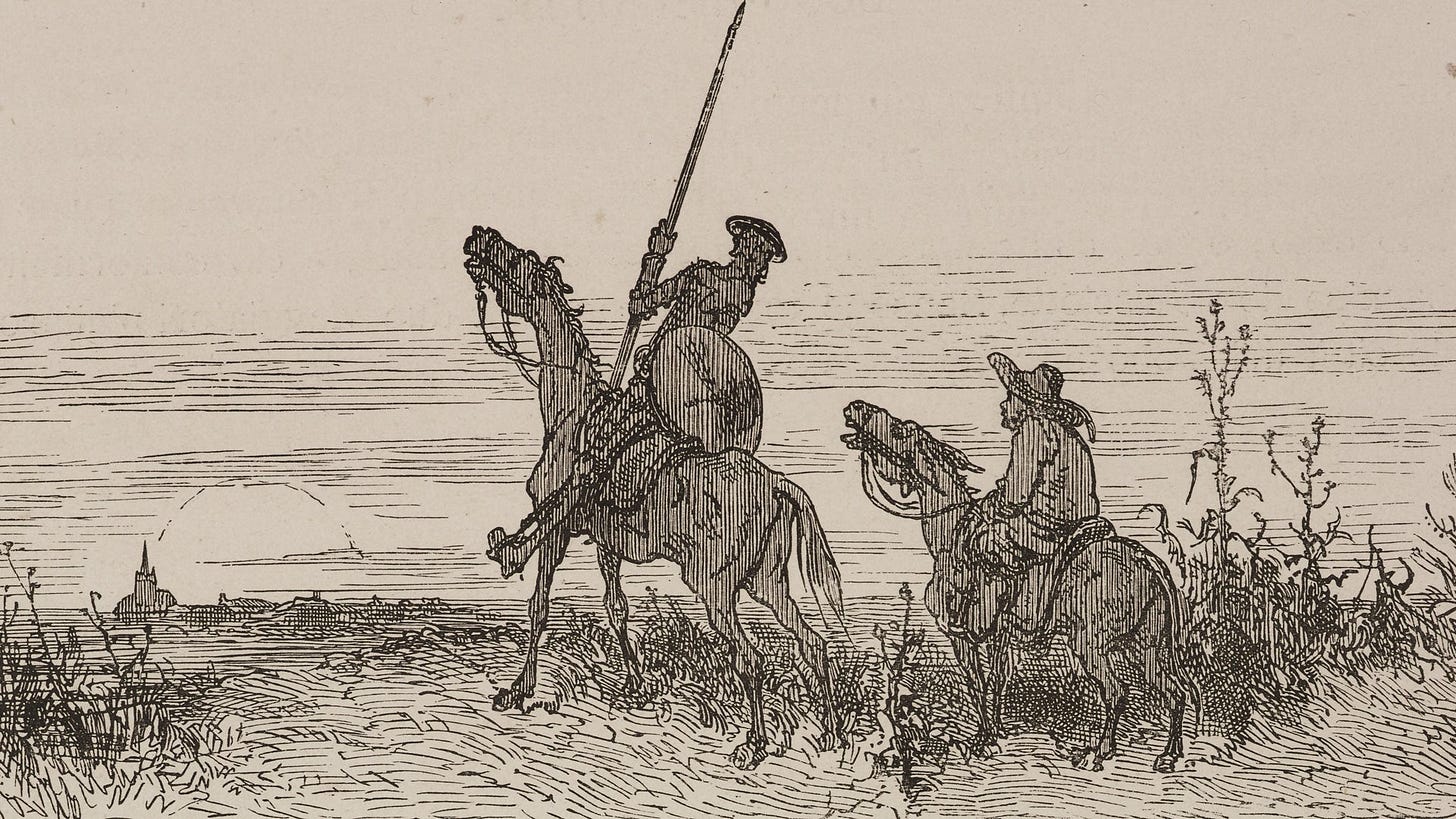
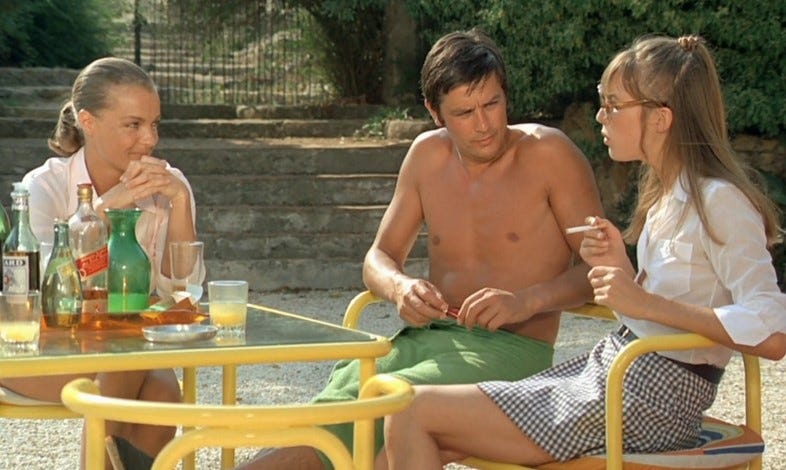
Death in Her Hands is my favorite Moshfegh too!